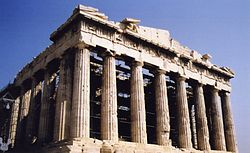- A brief account of the history of logic, from the The Oxford Companion to Philosophy (edited by Ted Honderich), OUP 1997, 497-500.
- A biography of Peter Abelard, published in the Dictionary of Literary Biography Vol. 115, edited by Jeremiah Hackett, Detroit: Gale Publishing, 3-15.
- Philosophy in the Latin Christian West, 750-1050, in A Companion to Philosophy in the Middle Ages, edited by Jorge Gracia and Tim Noone, Blackwell 2003, 32-35.
- Ockham wielding his razor!
- Review of The Beatles Anthology, Chronicle Books 2000 (367pp).
- A brief discussion note about Susan James, Passion and Action: The Emotions in Seventeenth-Century Philosophy.
- Review of St. Thomas Aquinas by Ralph McInerny, University of Notre Dame Press 1982 (172pp). From International Philosophical Quarterly23 (1983), 227-229.
- Review of William Heytesbury on Maxima and Minima by John Longeway, D.Reidel 1984 (x+201pp). From The Philosophical Review 96 (1987), 146-149.
- Review of That Most Subtle Question by D. P. Henry, Manchester University Press 1984 (xviii+337pp). From The Philosophical Review 96 (1987), 149-152.
- Review of Introduction to the Problem of Individuation in the Early Middle Ages by Jorge Gracia, Catholic University of America Press 1984 (303pp). From The Philosophical Review 97 (1988), 564-567.
- Review of Introduction to Medieval Logic by Alexander Broadie, OUP 1987 (vi+150pp). From The Philosophical Review 99 (1990), 299-302.
Thursday, December 17, 2009
"Art as Idea as Idea" by Joseph Kosuth,1966
“Being an artist now,means to question the nature of art. If one is questioning the nature of painting, one cannot be questioning the nature of art . . . That’s because the word ‘art’ is general and the word ‘painting’ is specific. Painting is a kind of art. If you make paintings you are already accepting (not questioning) the nature of art.”
During this formative stage in his work, Kosuth made the tautological nature of art explicit. As an analytical proposition, art presupposes the existence of an aesthetic entity that fulfills the criteria of “artness.”
This criteria, as Marcel Duchamp proved with his readymades, could consist merely of the declaration “this is a work of art.”
Kosuth used this linguistic approach to explore the social, political, cultural, and economic contexts through which art is presented and thus defined.
To demonstrate this discursive aspect of art, Kosuth employed language itself as his medium. What resulted was a rigorously Conceptual art devoid of all morphological presence; intellectual provocation replaced perception as words displaced images and objects. This shift was signaled in Kosuth’s First Investigations (subtitled Art As Idea As Idea), a series that includes photostats of dictionary definitions of words such as :
“water,”
“meaning,” and
“idea.”
Accompanying these photographic images are certificates of documentation and ownership (not for display) indicating that the works can be made and remade for exhibition purposes. This strategy of presentation represents Kosuth’s attempt to undermine the preciousness of the unique art object and its privileged place in the museum. He sought to demonstrate that the “art” component is not located in the object itself but rather in the idea or concept of the work.
Along with other Conceptual artists Kosuth waged an attack on conventional aesthetics that has informed the strategies of a younger generation. From Kosuth’s initial enterprise, these artists have inherited a deconstructive approach to art in which a critique of the production of meaning takes precedence over the communication of meaning.
During this formative stage in his work, Kosuth made the tautological nature of art explicit. As an analytical proposition, art presupposes the existence of an aesthetic entity that fulfills the criteria of “artness.”
This criteria, as Marcel Duchamp proved with his readymades, could consist merely of the declaration “this is a work of art.”
Kosuth used this linguistic approach to explore the social, political, cultural, and economic contexts through which art is presented and thus defined.
To demonstrate this discursive aspect of art, Kosuth employed language itself as his medium. What resulted was a rigorously Conceptual art devoid of all morphological presence; intellectual provocation replaced perception as words displaced images and objects. This shift was signaled in Kosuth’s First Investigations (subtitled Art As Idea As Idea), a series that includes photostats of dictionary definitions of words such as :
“water,”
“meaning,” and
“idea.”
Accompanying these photographic images are certificates of documentation and ownership (not for display) indicating that the works can be made and remade for exhibition purposes. This strategy of presentation represents Kosuth’s attempt to undermine the preciousness of the unique art object and its privileged place in the museum. He sought to demonstrate that the “art” component is not located in the object itself but rather in the idea or concept of the work.
Along with other Conceptual artists Kosuth waged an attack on conventional aesthetics that has informed the strategies of a younger generation. From Kosuth’s initial enterprise, these artists have inherited a deconstructive approach to art in which a critique of the production of meaning takes precedence over the communication of meaning.
Subscribe to:
Post Comments (Atom)





No comments:
Post a Comment